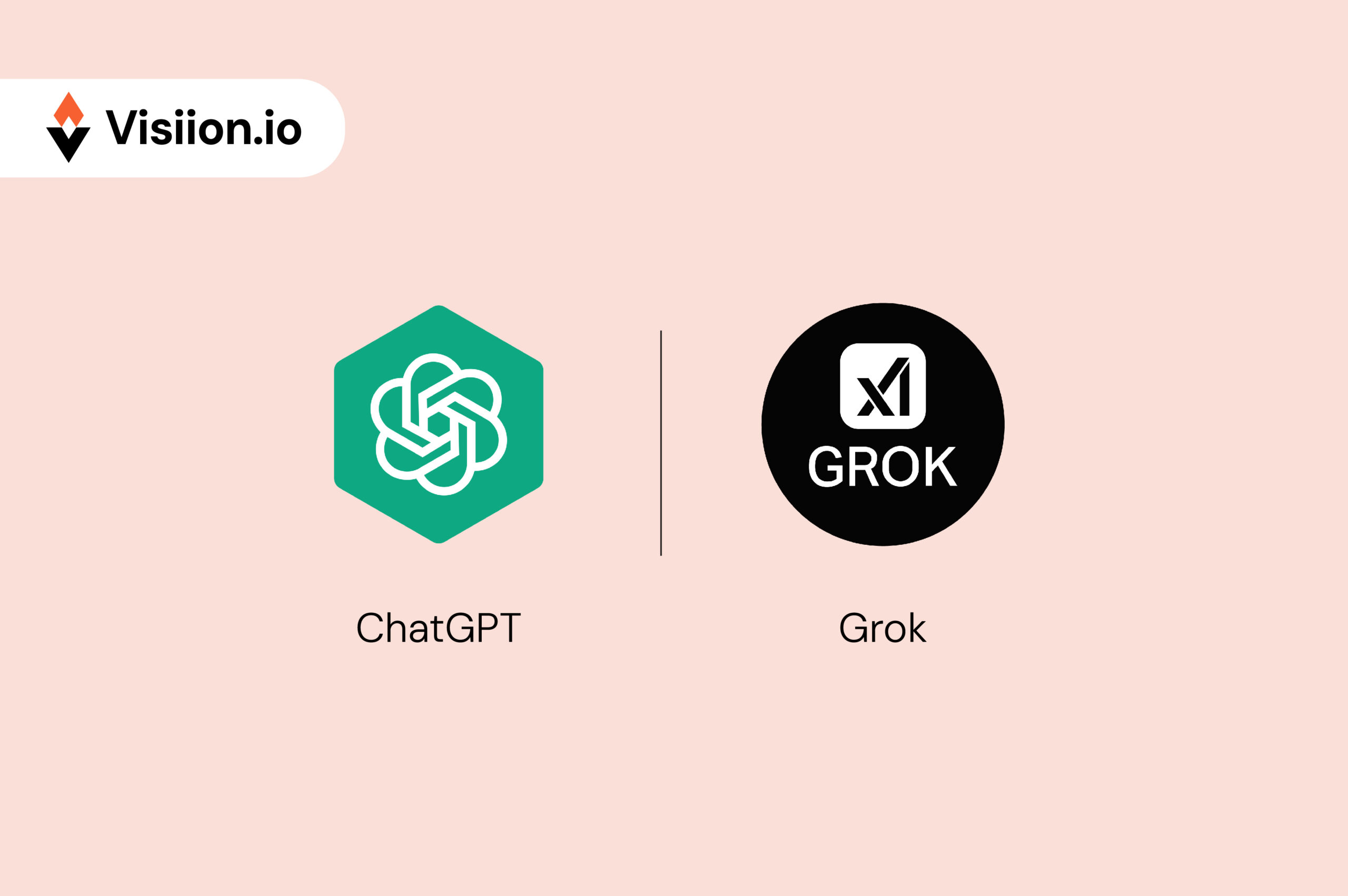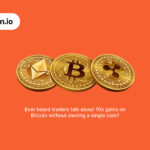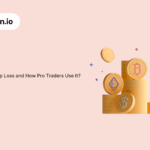ChatGPT or Grok: What’s Best for AI Crypto Trading?
AI now drives a major shift in how traders read crypto markets. If you are into crypto trading, we are sure you must have been bombarded with the ads of AI-powered trading bots and how to use ChatGPT or Grok for trading!
So why is this shift from human-based trading to AI Crypto Trading happening? Well, AI is a powerful tool, even for tasks that demand critical thinking. And who doesn’t want to have to develop a system that can trade on their behalf and make them money while they sit back and relax?
That’s the reason why trading floors, Discord groups, and algo communities are increasing the use of AI Crypto Trading. It offers speed and eliminates the biggest hurdle in trading: emotions! But is it really effective? Is it really safe? And most importantly? What AI tool is better for crypto trading?
Well, these are the questions we are going to address in this blog. We are going to compare two of the most popular AI platforms for AI Crypto Trading, ChatGPT and Grok.
Both offer powerful capabilities. ChatGPT simplifies research, builds strategies, and codes bots. Grok taps into real-time chatter on X (formerly Twitter), flagging token mentions and sentiment changes before the price reacts. To be honest, these tools don’t overlap; they work in different lanes.
This blog breaks them down based on what matters most to crypto traders: speed, signal accuracy, trade logic, and research power. Once you are done reading, you will get a clear idea of when to use Grok and when to use ChatGPT. We will also list out some limitations of both tools. So let’s get started.
What Grok Actually Does?
Grok monitors live data from X, the social platform that shapes crypto sentiment more than any other source. It doesn’t wait for news articles or official updates. Instead, it pulls from raw posts, influencers, trending hashtags, and viral threads, all in real-time.
Grok scans this stream to find sudden spikes in token mentions. If a coin like $FLOKI or $ORDI goes from 30 to 500 mentions in an hour, Grok catches it. Traders who set up alerts for specific tickers or keywords get notified instantly. They don’t need to scroll through X manually or chase second-hand signals.
Grok also watches macro keywords. It tracks posts mentioning “Fed hike,” “SEC crackdown,” or “spot ETF approval.” When these keywords trend, Grok flags the surge, helping traders prepare for market-wide impact.
This makes Grok extremely valuable for short-term scalping, meme-coin rotations, or reaction-based setups. It works well when markets move on emotion, FOMO, or viral news.
But Grok doesn’t build strategy. It doesn’t break down tokenomics, compare protocols, or suggest trade logic. It doesn’t write Pine or Python code. Traders still need another tool to filter the signal, apply risk rules, or automate decisions. Grok spots noise before the crowd sees it, but that’s where its job ends.
What ChatGPT Is Built For?
ChatGPT operates as an analytical powerhouse. Instead of tracking social chatter or scanning trending hashtags, it breaks down complex information faster than most human researchers. It supports traders who ask deeper questions: “What’s the risk in this token’s supply model?” or “How does this governance structure compare to its competitors?”
ChatGPT parses whitepapers, tokenomics, roadmaps, and protocol documentation. It delivers clean summaries and flags suspicious claims, vague milestones, or team-related red flags. It works best when traders need structure, reasoning, and clarity.
Now, let’s forget research. Let’s talk about ChatGPT’s ability to build codes. Traders can feed it requests like “Write a Pine Script that signals EMA crossovers with RSI confirmation,” and it responds with complete logic. It writes Python scripts, backtesting modules, and even entry-exit frameworks based on provided rules.
This tool also helps with risk management. Give it basic context, capital size, market volatility, and timeframe, and it builds stop-loss, take-profit, and position-sizing logic. For teams managing funds or building signal bots, ChatGPT delivers clean, consistent output.
But it doesn’t give instant alerts. It doesn’t know what’s trending on X. It waits for input. So, traders who use ChatGPT need a trigger source. It won’t tell anyone when a coin explodes on social media, but it will explain how to handle that explosion once flagged.
Grok vs. CharGPT Feature Comparison
| Feature | Grok (Real-Time Feed) | ChatGPT (Strategic Engine) |
| Sentiment detection | Pulls live X data instantly | Needs manual prompt input |
| Meme coin spotting | Flags spikes before price action | Doesn’t track hype |
| Strategy creation | Not supported | Fully supports logic-based planning |
| Token research | Limited summaries only | Breaks down whitepapers and models |
| Script/code generation | Not available | Handles Python, Pine, and JSON |
| Best for | Scalpers, momentum traders | Analysts, strategy developers |
Grok wins when traders need speed and market pulse. It works like a radar, fast, reactive, and emotion-driven. ChatGPT steps in when structure matters. It acts like a builder, clean, logical, and code-ready.
Together, they don’t compete. They cover two sides of the same trading equation.
How Pro Traders Use Both Together?
A lot of smart traders are combining the power of Grok and ChatGPT into a single workflow. One tool senses movement, and the other decides how to act.
They start with Grok and set up alerts for trending tokens, macro terms, or niche hashtags. When Grok flags a spike, for example, $WIF mentions jumping 600% in an hour, they take that trigger and plug it into ChatGPT.
Now, the roles are switched.ChatGPT takes that context and asks:
- What’s the token’s total supply and recent volume?
- Is there a real utility or just hype?
- What’s a smart risk-reward entry here?
Within seconds, ChatGPT outlines a trading framework: position size, entry logic, exit zone, and stop level. If needed, it writes code for automated execution or trading bots.
Some platforms build this combo into a pipeline. Grok supplies the data, and ChatGPT structures the decision. Traders get alerts, analysis, and executable logic faster than their competitors.
Real-Life Trading Examples
Meme Coin Trigger
Grok picks up a huge spike in $PEPE mentions tied to influencer tweets. ChatGPT receives this signal with the prompt: “$PEPE trending. Write a low-risk trade plan for a 5% capital exposure.” The output includes entry near support, stop-loss just under recent lows, and a target based on previous volume spikes.
Macro Market Reaction
Grok spots “rate hike pause” trending across verified accounts after a Fed announcement. ChatGPT takes this input and evaluates potential moves on Bitcoin and altcoins. It suggests a short-term ETH long with tight risk control, based on historical correlation to rate pauses.
Altcoin Research Filter
Grok flags $RNDR and $AKT as trending in back-to-back sessions. ChatGPT compares their tokenomics, developer activity, use-case viability, and volume trends. It recommends $AKT for higher long-term potential due to broader infrastructure utility and stronger network metrics.
In all three cases, Grok gives the heads-up. And ChatGPT? Well, it refines the idea and turns it into structured logic.
Limitations, Risks, and Optimization Tips
Grok’s Limitations
Grok relies on volume. If a coin isn’t trending, Grok won’t catch it. Worst part? It sometimes misses niche tokens or confuses duplicate names. On top of that, it doesn’t distinguish between hype and impact. A celebrity post and a real exploit both show up as spikes. Without analysis, Grok can lead traders into noisy setups.
ChatGPT’s Limitations
ChatGPT follows prompts. If the input lacks context, the output won’t help. It doesn’t verify live events. It can hallucinate connections or misread price structure if the user feeds it bad data. It doesn’t replace on-chain tools or charting platforms.
Optimization Tips
It’s not as easy to use AI Crypto Trading as it sounds! There are multiple tools
- Always verify Grok alerts with chart structure or volume.
- Feed ChatGPT complete prompts, including price levels, timeframe, and capital size.
- Avoid using either tool blindly. Combine with a proper workflow and manual checks.
When used properly, both tools enhance speed and clarity. When misused, they increase risk.
Which Tool is Suitable for Whom?
Grok:
- Traders who want to trade fast-moving news and meme coin surges.
- Traders who rely on X trends and influencer chatter to grab opportunities
- Scalpers who scalp based on buzz and market momentum.
ChatGPT:
- Traders who build bots backtest setups, and design strategies for trading
- Traders who compare projects, break down supply models, or research protocols.
- Traders who use scripts or automate decisions for trading.
Look, it’s important to understand that experts recommend against relying on a single AI Crypto Trading. As per these experts, relying on one AI Crypto Trading can be risky.
So, they recommend building a system using ChatGPT that works in sync with Grok. Reason?? Well, Grok can help get quick market updates, and ChatGPT helps analyze those updates.
Remember, it’s important to spot the opportunities for crypto trading. But it’s even more important to act the right way.
Final Verdict
If you are wondering about what platform to use for AI Crypto trading, this blog has answered your question. A lot of top-tier organizations and traders are using AI Crypto Trading. But they are doing it wisely.
They utilize every platform that’s available to them. Crypto traders can deploy both tools directly into their dashboards. Grok powers sentiment modules and live alerts. ChatGPT feeds research panels, bot builders, and strategy templates. When platforms combine them, users get a complete trading toolkit, signal, analysis, and execution.
Trading desks, influencers, fund managers, and retail traders all benefit when they stop treating these tools as competitors!
We hope this blog has cleared all your doubts regarding what AI tool to use for AI crypto trading.










